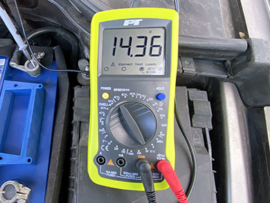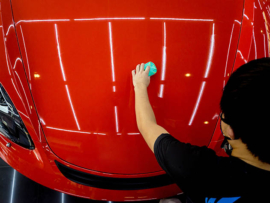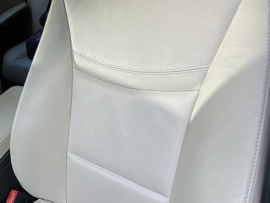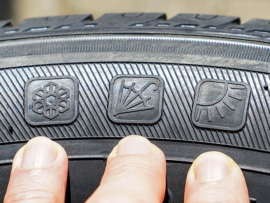- 1. P000B Code – “B” Camshaft Position Slow Response Bank 1
- 2. How are you usually noticing P000B code?
- 3. What causes P000B code?
- 4. Conclusion
- 5. Common Questions
- 6. How complicated is a P000B error diagnostics?
- 7. Can I continue driving with the P000B DTC?
- 8. How is the code P000B serious?
- 9. What problem the code P000B may point to?
P000B Code – “B” Camshaft Position Slow Response Bank 1
The P000B code is a generic powertrain code that is defined as “B Camshaft Position Slow Response Bank 1” and indicates a problem with the exhaust camshaft on bank 1 of the engine. This code can be caused by a variety of issues, from faulty camshaft sensors to problems with the timing chain or belt.
If you receive a P000B code, it is important to have it diagnosed and repaired as soon as possible. Ignoring the code could result in decreased engine performance, reduced fuel economy, and even engine damage over time.
How are you usually noticing P000B code?
This code relates to the engine’s timing, which is critical for proper performance and fuel efficiency. If you notice any of the following symptoms, you may have a P000B trouble code:
– check engine or warning light on your dashboard illuminates, it may indicate that there is an issue with your engine’s timing.
– increased emissions may be a symptom of the P000B trouble code. If your vehicle is producing more pollutants than usual, it may be an indication that the engine timing is not working correctly.
– poor engine performance is another symptom that can occur with a P000B trouble code. The engine may run roughly or hesitate during acceleration. In some cases, the engine may even stall or fail to start altogether.
– engine noise is another common symptom of the P000B trouble code. If you hear a knocking or rattling sound coming from the engine, it may indicate that there is an issue with the engine timing.
However, this trouble code can have several symptoms, including an illuminated check engine light, increased emissions, poor engine performance, and engine noise.
What causes P000B code?
1. Faulty camshaft position sensor. This sensor is responsible for monitoring the position of the camshaft and communicating that information to the engine control module (ECM). If the sensor is faulty or not reading correctly, it can cause the ECM to throw a P000B code.
2. Timing chain or belt issue. If the timing chain or belt is worn or damaged, it can cause the camshaft to not respond correctly, which can trigger the P000B code. This is especially common in high-mileage engines or engines that have not had regular maintenance.
3. Oil pressure or oil flow to the camshaft problem. The camshaft relies on oil to lubricate and move smoothly, so if there is a problem with oil pressure or flow, it can cause the camshaft to not respond correctly, triggering the P000B code.
Conclusion
If you receive a P000B code, you are experiencing a serious problems on the engine side likely not to be fixed at DIY garage. The best course of action is to take your vehicle to a qualified mechanic for diagnosis and repair. They will be able to use specialized equipment to read the code and diagnose the underlying issue, whether it be a faulty camshaft position sensor, a timing chain or belt problem, or an issue with the oil pressure or flow.
In addition to addressing the underlying issue, a mechanic may also recommend other maintenance tasks that can help prevent future P000B codes from occurring. This could include regular oil changes, replacing the timing chain or belt at recommended intervals, and performing regular engine tune-ups.
Common Questions
How complicated is a P000B error diagnostics?
Diagnosing a P000B trouble code can be a moderately complicated process. The first step is to use an OBD-II scanner to retrieve the code and any associated freeze frame data. This data will provide important clues as to what caused the code to be triggered.
Next, the mechanic will typically visually inspect the engine components related to the fuel system, such as the fuel pump, fuel lines, and fuel pressure regulator, to see if there are any visible signs of damage or wear. They may also test the fuel pressure and volume to ensure that the system is functioning correctly.
If the fuel system appears to be in good working order, the mechanic will then inspect the engine’s timing system, including the timing chain, tensioner, and other related components, to see if there are any issues that could be causing the code to be triggered. This may require the use of specialized tools and equipment to remove components and inspect them thoroughly.
If no issues are found with the fuel or timing systems, the mechanic may then inspect the engine’s sensors and wiring to ensure that they are functioning properly and providing accurate readings to the vehicle’s computer. This may require using a multimeter or other diagnostic tools to test the sensors and wiring for proper voltage and resistance levels.
Can I continue driving with the P000B DTC?
It is generally not recommended to continue driving with a P000B DTC as it can affect the engine’s performance and lead to increased emissions. While the car may still be drivable, it is best to address the issue as soon as possible to prevent any further damage to the engine. It is important to note that the severity of the issue can vary and some cases may not have any noticeable symptoms.
How is the code P000B serious?
The P000B code is a serious issue that can cause significant damage to the engine if not addressed promptly. This code indicates that the engine timing is off, which can result in poor engine performance, increased emissions, and engine damage. If the engine timing is too far advanced or too far retarded, it can cause severe engine damage, such as bent valves, damaged pistons, or damaged cylinder heads. Additionally, a poorly timed engine can cause poor fuel economy, rough idling, and poor acceleration, which can affect the vehicle’s overall drivability and safety.
What problem the code P000B may point to?
The P000B code may indicate a problem with the fuel pressure regulator or fuel injection system. Here are some possible causes:
1. Faulty fuel pressure regulator: A fuel pressure regulator that is stuck open or closed can cause fuel pressure to be too high or too low, leading to the P000B code.
2. Clogged fuel filter: A dirty or clogged fuel filter can cause a restriction in the fuel system, leading to low fuel pressure and triggering the P000B code.
3. Fuel pump issues: A failing fuel pump can also cause low fuel pressure, leading to the P000B code.
4. Wiring issues: Damaged or corroded wiring connections to the fuel pressure sensor or fuel pump can cause electrical faults that trigger the P000B code.
5. Failed fuel pressure sensor: If the fuel pressure sensor is faulty or fails, it may send inaccurate data to the engine control module (ECM), which can cause the P000B code to appear.
6. ECM issues: In rare cases, the P000B code may be caused by a problem with the ECM, such as a software malfunction or internal failure.
We do an efforts to find, research and recommend the best products. So, we may receive commissions from purchases that you make after following the links in our product reviews.







